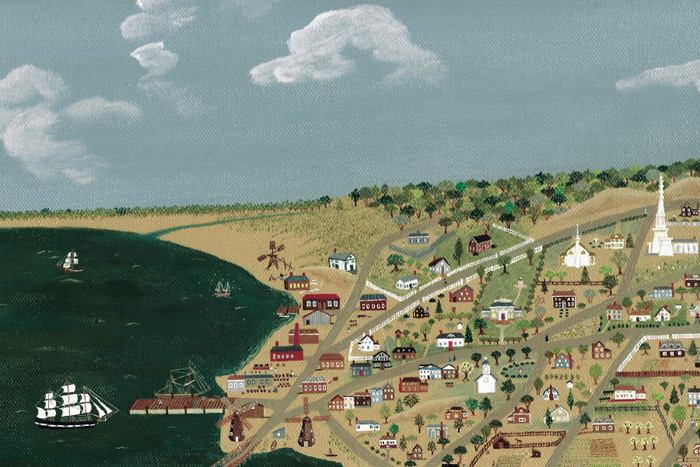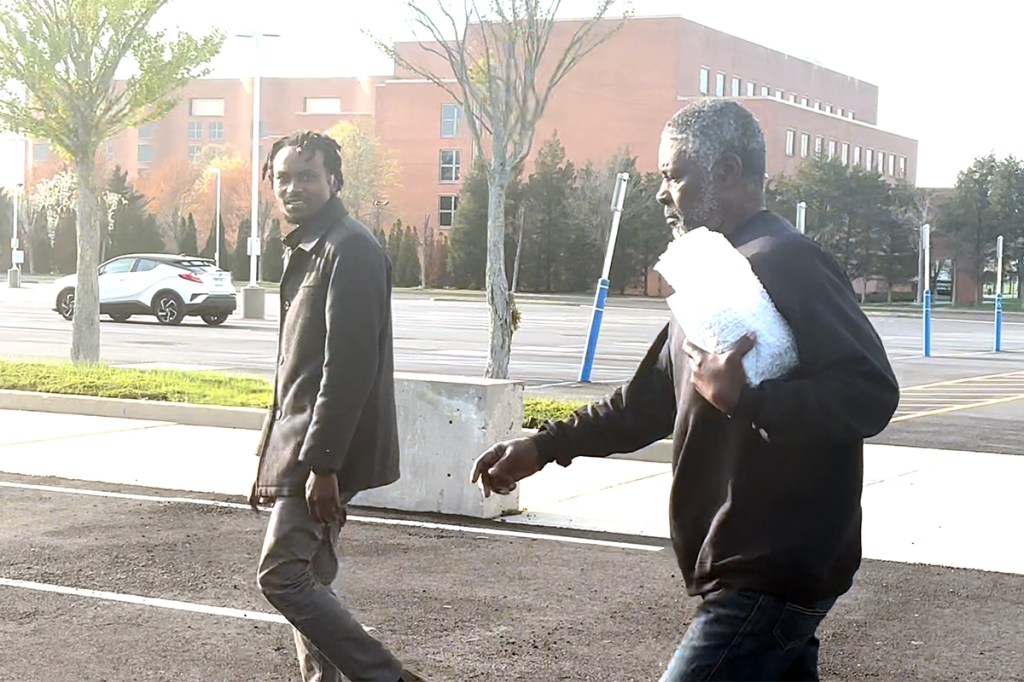Dan's Papers Cover Artist Michael Butler Paints Sag Harbor

Michael Butler’s quaint, subtly toned folk art Sag Harbor map called “The Great Meadow” on this week’s HarborFrost issue could be welcomed as a sweet harbinger of spring.
Butler, a self-taught artist, likes the freedom of painting without feeling restricted by any particular medium, subject matter, or style. He does study, though, and that effort is evident on close inspection of “The Great Meadow.” He’s an historian, a documentarian of older Sag Harbor and especially of subjects not generally followed outside the local area, which includes the African-American community of Eastville. A constant presence at the Sag Harbor Whaling & Historical Museum and the Eastville Historical Society, Butler explores their archives—photos and old newspapers—to gain perspective.
Here’s what the Old Whalers’ Church looked like before the Hurricane of ’38 toppled the steeple. Even if the Sag Harbor-North Haven bridge is from a different time period from that of the church, and other structures span the 18th century to the present, it’s the historical theme that counts, and so “representation” and “composites” guide Butler’s choices of buildings in his compositions.
Butler used to feel that his work, as he says, “was somehow not complete or alive” if there were no people in it. But he asserts, “that is no longer the case.” (The people are miniscule in “The Great Meadow,” but they are there.)

You’re sometimes referred to as a “naïve” or “primitive” painter. What terms do you prefer?
I like “intuitive” or “narrative” because my works tell stories with source material derived from mythology or history. There is always a story—real or imagined—behind each of my pieces.
When did you start painting and how did you manage with your day jobs?
I have a Masters in Public Administration from Baruch College, CUNY and went to work for the housing department in the city as a mortgage analyst, but I always loved to sketch and doodle in pen and ink and colored pencil. I still do today. I then moved into pastels, but could not find the level of detail that I needed. Then it was on to oil—too long of a drying time—and finally acrylic, which is the medium of the cover painting. [Butler’s twin, Martin, used to paint and though he no longer does, he’s invited to critique his brother’s work.]
Some years ago I was in a benefit for the Eastville Historical Society at the Whaling Museum, and I have been associated with the Museum ever since.
When I came out to Sag Harbor full time in 1988 I thought I’d paint, period, and I even had a gallery. But the reality was that I was not yet able to retire or semi-retire. I took a position with the Catholic Guardian Society working with developmentally challenged kids as a recreation therapist, planning projects, some of which included arts and crafts. Later on, I worked for the Town of East Hampton as a part-time coordinator of the Family Resource Center in charge of programs for kids, many special needs, and their families, and also as a full-time Senior Citizens Program Supervisor providing in-home services. I had 90 clients and a staff of six, but even then I kept painting. It kept my sanity going, aside from the fact that I loved doing it.
Some say they detect a slight change in your work over the last few years. Do you?
Not really. They say I have matured but I feel the same. Perhaps, though, they mean my use of color—it’s more subtle. In the cover painting, the palette is somewhat subdued, although I feel that the water provides a deeper trademark jewel tone. I’d like to start doing some larger canvasses. [“The Great Meadow” is 12 x 16 inches.]
Michael Butler is currently preparing for his next exhibitions at the Sag Harbor Whaling & Historical Museum: “Places” opens May 27 and “People” opens on July 3. sagharborwhalingmuseum.org




